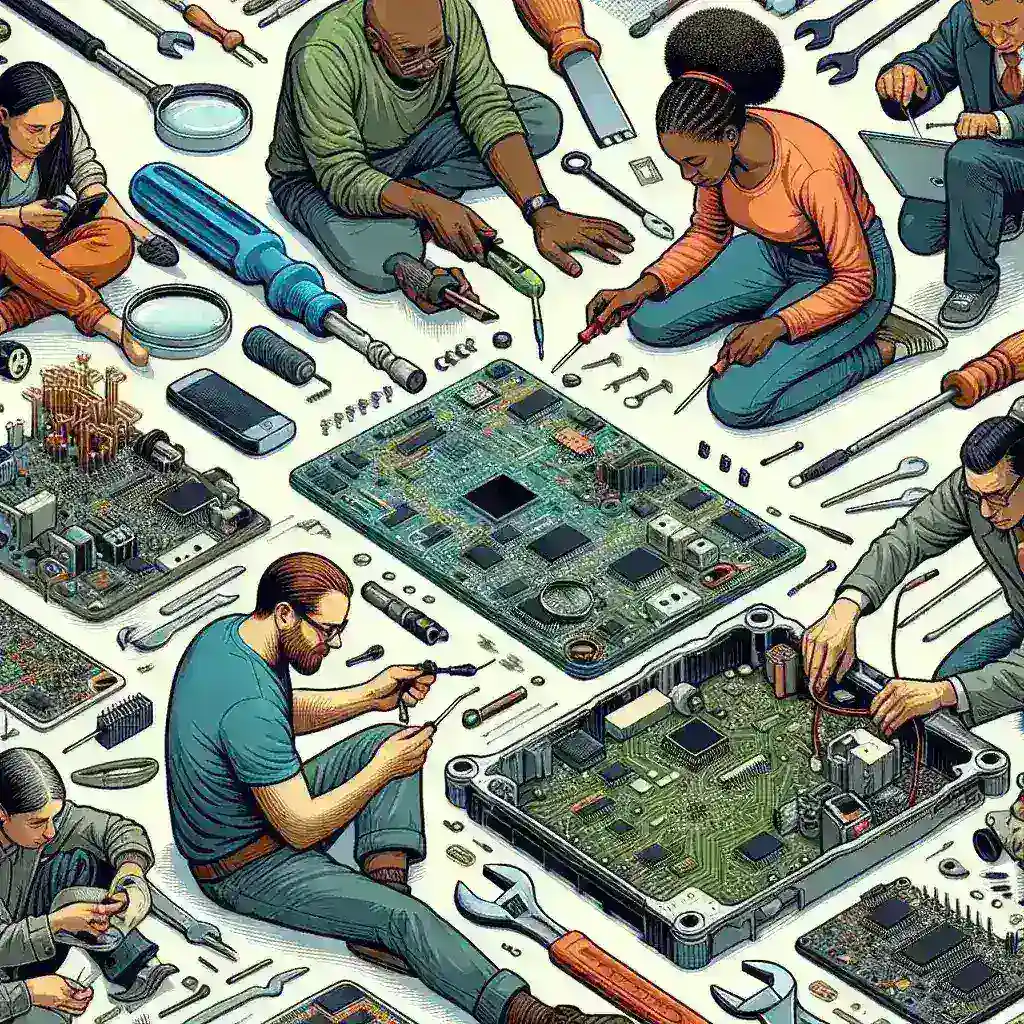Introduction
In today’s fast-paced technological landscape, the need for sustainable practices has never been more critical. Informal repair ecosystems are emerging as vital players in promoting resilience within the tech industry. These grassroots networks of repair enthusiasts and community-driven workshops are not only challenging the throwaway culture but are also fostering a sense of community and sustainability. This article delves into the dynamics of informal repair ecosystems, their historical context, and their implications for the future of technology.
Understanding Informal Repair Ecosystems
Informal repair ecosystems can be defined as unregulated networks where individuals and communities come together to fix and repurpose broken technology and appliances. Unlike formal repair services, which often require specialized training and certifications, these informal settings rely on collective knowledge, shared skills, and a passion for sustainability.
Historical Context
The origins of informal repair practices can be traced back to the early days of technology, where DIY (Do It Yourself) culture was prevalent. From fixing radios to repairing computers, individuals took it upon themselves to understand their devices and extend their lifespans. However, with the rise of consumerism and mass production in the late 20th century, the focus shifted toward purchasing new devices rather than repairing old ones.
In recent years, this trend has begun to reverse, driven by environmental concerns and a growing awareness of the finite nature of resources. The Right to Repair movement, which advocates for legislation to allow consumers to repair their devices, has gained traction worldwide, further empowering informal repair ecosystems.
The Role of Community
At the heart of informal repair ecosystems is the sense of community they foster. Local repair groups, maker spaces, and community workshops bring together individuals with diverse skill sets, allowing them to share knowledge and resources. These settings create an inclusive environment where everyone—from beginners to seasoned experts—can learn and contribute.
- Skill Sharing: Repair workshops often organize events where community members can learn specific skills, such as soldering or troubleshooting.
- Resource Pooling: Members often share tools, spare parts, and materials, reducing the cost and effort involved in repairing devices.
- Encouraging Innovation: Exposure to diverse perspectives and problem-solving approaches can lead to innovative solutions for common repair challenges.
Benefits of Informal Repair Ecosystems
Informal repair ecosystems offer a myriad of benefits that extend beyond mere device repair. They contribute to environmental sustainability, economic resilience, and social capital.
Environmental Sustainability
The environmental impact of e-waste is staggering, with millions of tons generated annually. Informal repair ecosystems play a crucial role in mitigating this issue. By extending the life of electronic devices and reducing the need for new products, these networks contribute to a more sustainable approach to technology.
Economic Resilience
Informal repair ecosystems can bolster local economies. They create job opportunities, stimulate local entrepreneurship, and encourage the development of new skills. Repair cafes and local workshops can attract customers who might otherwise choose to purchase new devices, thereby supporting small businesses.
Social Capital
These ecosystems foster social connections and community engagement. Participants often form lasting bonds through their shared experiences, creating a sense of belonging and mutual support. This social capital can be invaluable in times of crisis, providing a network of support for individuals facing economic hardships or technological challenges.
Challenges Faced by Informal Repair Ecosystems
Despite their benefits, informal repair ecosystems encounter several challenges that can hinder their growth and effectiveness.
Regulatory Hurdles
In many regions, strict regulations and licensing requirements create barriers for informal repair practitioners. This can deter individuals from engaging in repair activities or limit the types of devices they can work on.
Lack of Access to Resources
While community members often pool resources, the availability of spare parts and tools can be limited. Some informal repair ecosystems struggle to acquire the necessary components to fix a wide variety of devices.
Knowledge Gaps
Although many participants possess valuable skills, there can be knowledge gaps that hinder effective repairs. Ensuring that all community members have access to training and support is essential for the continued success of these ecosystems.
Future Predictions for Informal Repair Ecosystems
The future of informal repair ecosystems appears promising, with several trends likely to shape their development.
Increased Integration with Formal Systems
As the Right to Repair movement gains momentum, it is conceivable that informal repair ecosystems will become more integrated with formal repair services. This could include collaborative workshops, shared training programs, and partnerships with local businesses.
Technological Advancements
The rise of open-source technology and 3D printing will provide informal repair practitioners with new opportunities to design and create replacement parts. Access to these technologies can significantly enhance the capabilities of informal repair ecosystems.
Cultural Shift Toward Sustainability
As awareness of environmental issues continues to grow, more individuals may turn to informal repair ecosystems as a sustainable alternative to tech consumerism. This cultural shift could lead to an expansion of repair networks and increased participation in community repair events.
Real-Life Examples of Informal Repair Ecosystems
Across the globe, numerous informal repair ecosystems exemplify the resilience and creativity of their communities.
Repair Cafes
These community-driven events, where volunteers help individuals repair broken items, have gained popularity in many cities. Repair cafes provide a welcoming environment for people to learn about repairing their belongings while reducing waste.
Makerspaces
Makerspaces are collaborative workspaces equipped with tools and technology for hands-on projects. Many makerspaces incorporate repair activities into their programming, empowering members to become proficient in fixing various devices.
Conclusion
In summary, informal repair ecosystems represent a beacon of resilience in the tech world. They challenge consumerist paradigms, foster community engagement, and promote sustainability. As these networks continue to evolve and gain recognition, their impact will undoubtedly play a significant role in shaping a more responsible and sustainable approach to technology.

